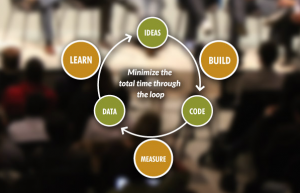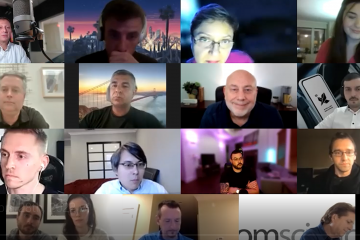MVP and the misconceptions about what it means
Serving as a technical advisor is an ever-changing job. In this capacity, I often find myself at pitching sessions organized by KodoStartups, where a multitude of startups are competing for the chance to share their nascent ideas with possible investors. Typically, these functions are saturated with enthusiastic audience members and inventive startup companies, prepped and ready to captivate investors with their distinct propositions.
The task of a startup founder, pitching their brainchild to investors, is certainly not a cakewalk. The time given to captivate these investors is fleeting, and the entrepreneur must convey their message both effectively and convincingly. It’s dispiriting to see numerous founders grappling with expressing their vision, their intended market, and their approach to infiltrate the desired sector. Yet what worries me more, as a software developer and a technophile, are the common misconceptions about the idea of a Minimum Viable Product (MVP).
Founders pitching their MVP to investors
Prior to diving into the crux of the MVP problem, let’s decipher what I usually observe during these pitches and the inherent misunderstandings.
Astoundingly, the lion’s share of these founders have not read “The Lean Startup” by Eric Ries. They may have encountered the term MVP through dialogues with other startup entrepreneurs and included it in their corporate narratives. While incorporating such terminologies is vital to be in sync with the language of the startup ecosystem, the absence of a profound grasp of their actual meaning can be harmful.
In many cases, the intricacy of the term and the notion of an MVP are stripped down, reduced to a single phrase, and then disseminated. With every transmission, the core connotation gets weakened and eventually it boils down to something like “Build an app with just the vital features at launch”.
Such widespread simplification is exactly what rings in my ears when startup entrepreneurs endeavor to portray their understanding of an MVP.
The dangers of building an MVP with the lack of understanding of what it is
Starting an app with just crucial features might initially appear clever and could attract a few backers, but quite frankly, it doesn’t hold much weight.
As a nascent business, your main objective should be to align your product with market demands and subsequently devise the proper business approach for your clientele. Quite simply, it’s impossible to make a final decision on what should be classified as a “critical feature” of your product.
Assuming you already have a market-ready product and a well-identified client base, you might be in a position to encapsulate the essential functionality your product must offer. Nevertheless, at this point, your startup is pivoting into a full-blown business. Regularly refining your application and implementing consistent optimizations can be helpful as they reshape the app to better cater to customer requirements. Nonetheless, as a startup, your attention should be on testing and iterative adjustments in a creative manner, not on enhancing an existing product.
Launch with “essential functionality” may kill your startup
Now that we’ve established the impossibility of launching a product with “critical functionality,” it’s crucial to comprehend why such an assumption is perilous for startups.
Since you are in unfamiliar territory regarding the “critical functionality” of your application, service, or product, your safest move would be to approximate it. This approximation will predominantly stem from your personal necessities and encounters, given there’s no other viable source. Consequently, you’ll be crafting a solution focused on your needs while simultaneously hoping it would be a feasible solution for others facing the same problem.
Additionally, you’re probably erring in assuming that others grapple with the same problem as you. You then cling to the idea that your proposed solution is suitable for the issue at hand. This breeds further speculation regarding the chosen “critical functionality,” challenging whether it’s the right feature set to begin with.
Even forgetting the fact that “critical functionality” is subjective, ponder the countless startups in your sector. Plus, these counterparts are probably targeting the same customer base and offering similar solutions. Whilst we might perceive our solutions as unique, history has demonstrated that truly novel solutions are elusive.
Rapidly launching a product with sparse functionality offers other startups the chance to release superior and more inclusive products. Yes, rapid market entry is crucial, but think about this – was Apple the originator of the MP3 player? Certainly not, but they outclassed their competitors who were desperate to seize the market with underdeveloped products, by investing time in crafting an exemplary device.
This leads us to the heart of our discussion – underdeveloped products. MVP is frequently cited as a justification for a lackadaisical attitude, limited commitment, and scant creativity in the startup environment. Often, the intense drive to “launch something” eclipses the significance of creating authentic solutions – resulting in wasted resources that could have been directed towards crafting a viable solution.
What is MVP then?
The principle of MVP, Minimum Viable Product, holds tremendous significance and demands accurate execution and application.
Building an effective MVP involves creating a hypothesis. This hypothesis then needs to be tested for validation, generating data and instigating learning and knowledge.
The main function of an MVP is to assess a hypothesis, gather relevant data around it, and stimulate understanding based on this hypothesis.
Without an aspect of evidence or contradiction, or the lack of data compilation and learning process, it doesn’t qualify to be an MVP. It’s nothing but a term employed to signify a product with elementary functionalities.
Familiarize yourself with the BUILD – MEASURE – LEARN cycle.

Remember that this approach is repetitive. Your aim should revolve around quickly experimenting with different theories, one after another. An MVP isn’t the finished product you plan to bring to the market, it’s merely a waypoint in the process that guides you to your final product. Aptly named as validated learning cycle, it supports your learning and sparks creativity until you yield something of value to the customer.
Conclusion
The creation of an MVP is not simply about squeezing fewer features into your product. The real essence lies in having a theory to test, measure, and learn. You then engage in repeating this process until you discover a feasible solution to a problem.
Debuting a product with basic functions could have adverse effects. It could culminate in the failure of your startup or your idea. Half-done products only account for a drop in the quality of the product, draining investment, and wasting precious time and resources.
Make a commitment to spend time understanding customer requirements. Concentrate your endeavors on delivering a robust solution that satisfies those needs.



0 Comments